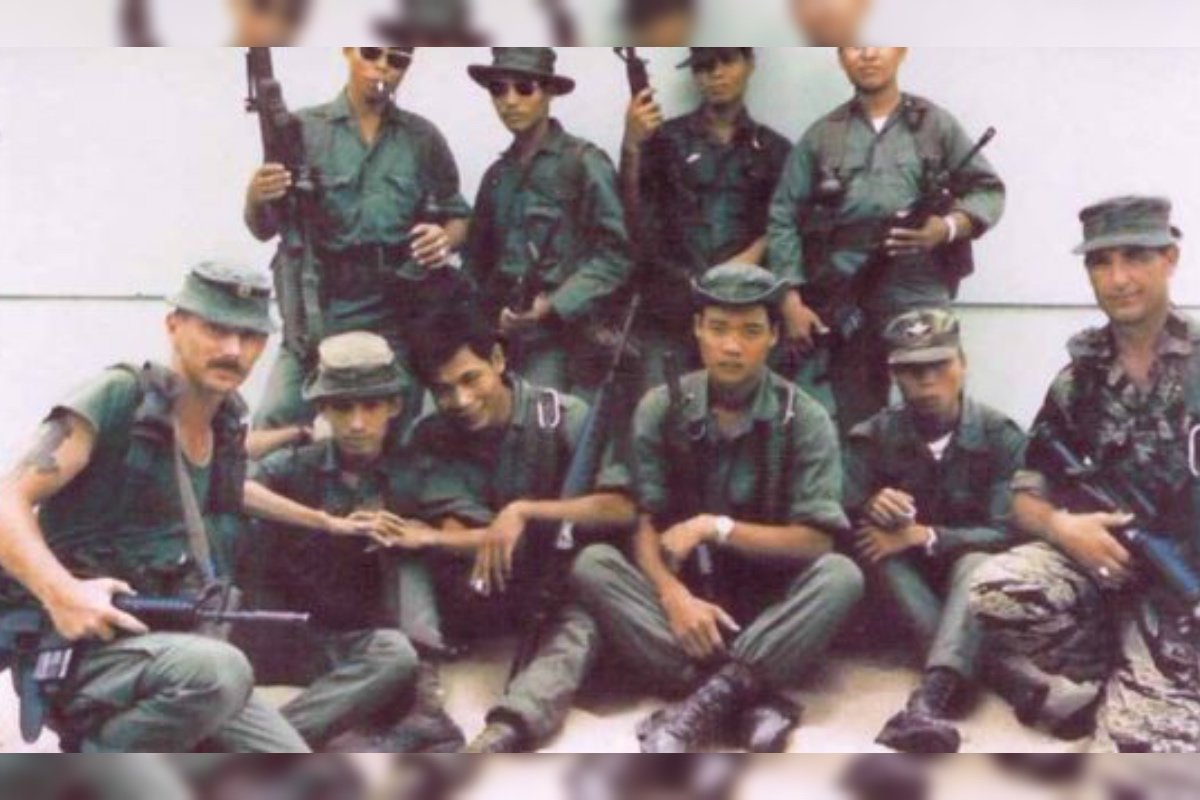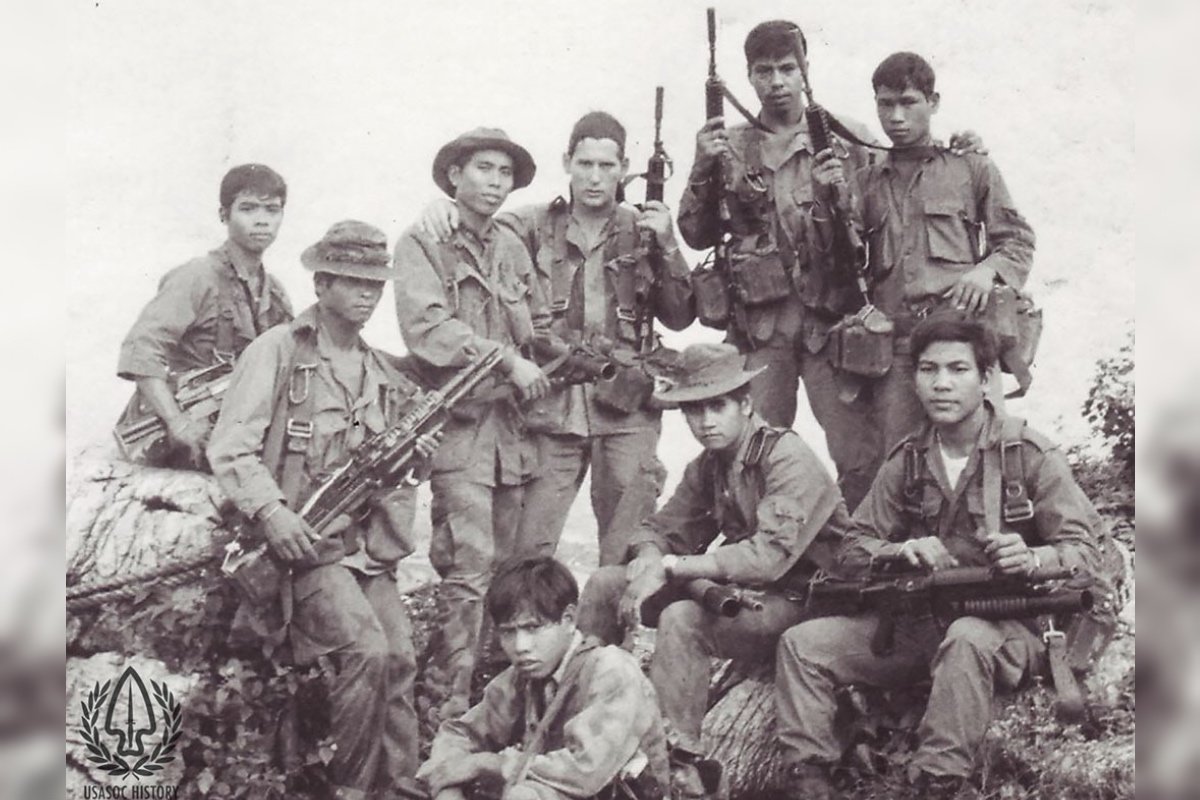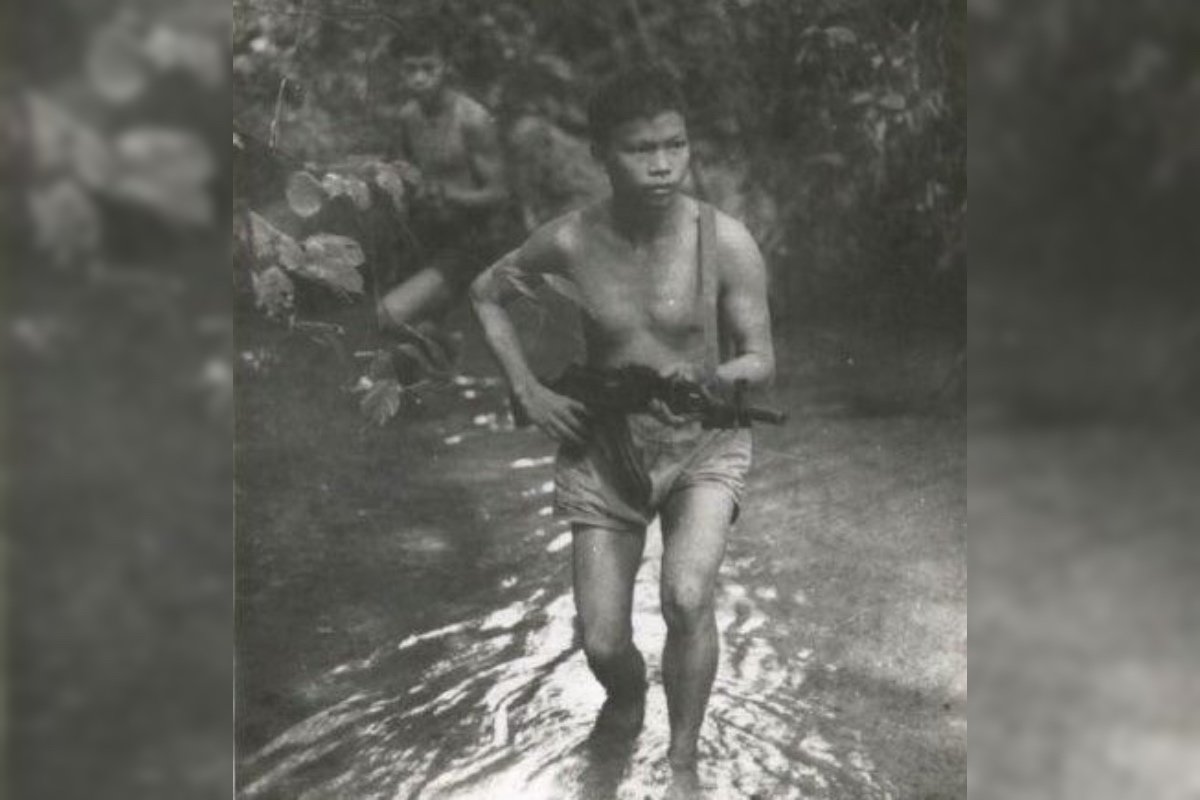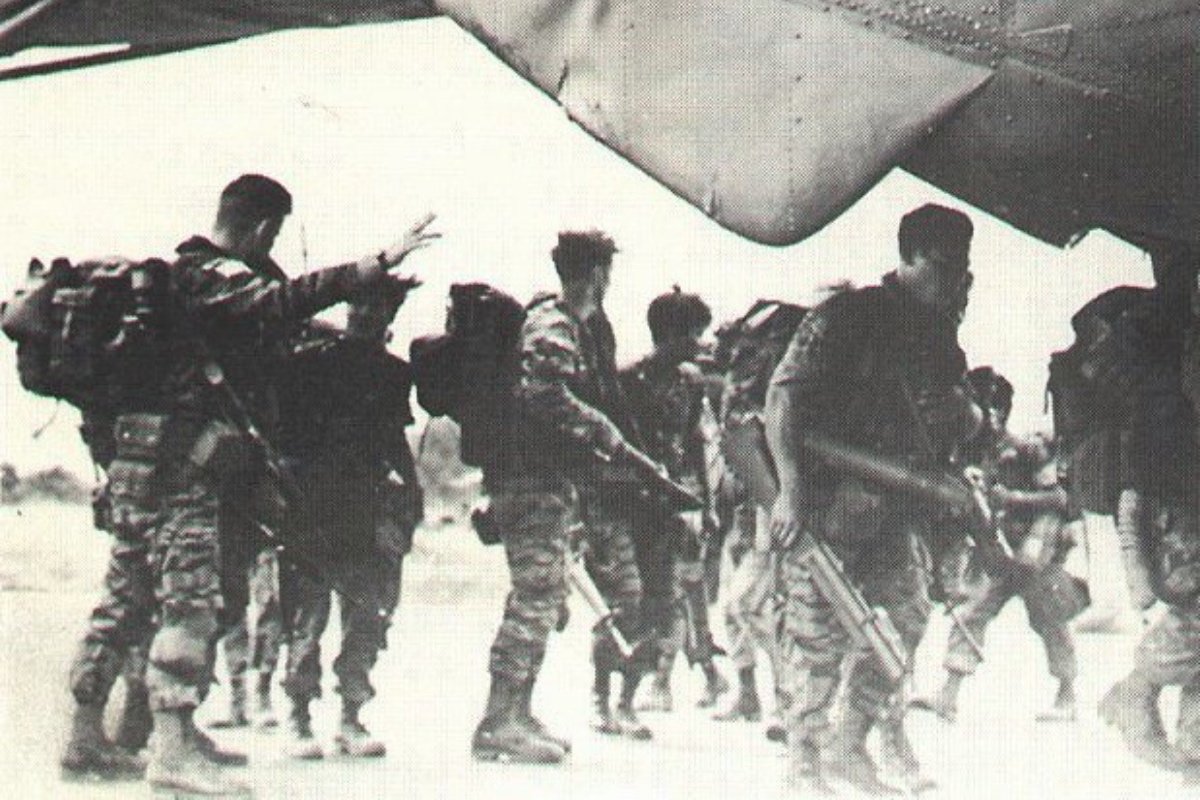Attack On FOB 4: The Worst Day In US Army Special Forces History

ST Rattler was pivotal in repelling the North Vietnamese attack on FOB 4, a secretive Special Forces base in Vietnam. Photo courtesy of Sandboxx.
Even before the U.S. military deployed significant forces to Vietnam, Army Special Forces operators were on the ground advising and training South Vietnamese troops. From the late 1950s to the early 1970s, Green Berets fought and trained in Southeast Asia.
Out of the approximately 3.2 million American troops that deployed to Vietnam, 20,000 were Green Berets, who participated in thousands of missions that ranged from reconnaissance patrols to company-size raids to covert cross-border operations. For its courage and aggressiveness, the Army Special Forces Regiment paid a heavy price, losing approximately 900 men in the jungles and paddies of Southeast Asia.
But August 23, 1968, is by far the worst day in terms of casualties for the Special Forces Regiment not only in Vietnam but throughout its storied history.
A Secret Unit Fighting a Secret War
Although most Green Berets served in their operational detachments throughout the country, a few hundred joined a highly classified outfit, the innocuous-sounding Military Assistance Command Vietnam-Studies and Observations Group (MACV-SOG).
MACV-SOG was established in 1964 as a covert joint special operations organization tasked with conducting cross-border operations in Laos, Cambodia, Thailand, and North Vietnam—where U.S. troops weren’t supposed to be according to successive administrations.
SOG was composed of Army Special Forces operators, Navy SEALs, Recon Marines, Air Commandos, and a loyal cadre of local mercenaries.

During its eight-year secret war (1964-1972), SOG performed some of the most dashing special operations in U.S. military history, mainly targeting the infamous Ho Chi Minx Trail, a ground-level and underground complex stretching for hundreds of miles from North Vietnam through Laos and Cambodia into South Vietnam, which the North Vietnamese and Vietcong used to fuel their fight in the South.
Divided into three geographical subcommands— Command and Control North (CCN), Command and Control Central (CCC), and Command and Control South (CCS)—SOG worked closely with the U.S. Intelligence Community and military commanders.
It was in one of CCN’s main bases that the worst day in Army Special Forces history unfolded.
“We Came Here to Die”
August 23, 1968.
Forward Operations Base (FOB) 4, a top-secret special operations base, was brimming with life. The day before, dozens of Green Berets had appeared in front of their promotion boards, while SOG was holding its monthly staff meeting on base with commanders and intelligence and operations officers from all operations bases present. Many Green Berets from both groups had stayed on FOB 4 overnight. Meanwhile, a SOG command and control staff had recently relocated from the Da Nang Air Base to FOB 4, further swelling the numbers of Green Berets in the base. No one suspected that in the next hours they would be fighting for their lives in what ended up being the worst day in Army Special Forces history.
Located on the north side of Marble Mountain, a natural feature with five peaks interspersed by flat land, FOB 4 was a staging point for many top-secret cross-border operations.

The North Vietnamese knew that very well, however, and decided to attempt the unthinkable: overrun the SOG base and kill as many Green Berets and local mercenaries as possible. Spearheading the attack would be the fearsome sappers.
By U.S. standards, North Vietnamese sappers could be considered special operations troops. They received six months of advanced training on assault tactics, demolitions, and clandestine infiltration. Throughout the war, they established a name for themselves as a fearsome opponent. But that reputation came at a deadly cost. North Vietnamese sappers were fanatical communists that would eagerly sacrifice themselves in an attack. With elements of the Japanese Kamikaze, the communist sappers were known to attack a target fully expecting to be killed in the process. They often displayed this brutal determination by wearing white headbands that had written in blood, “We came here to die.”
“[The Viet Cong sappers] were dedicated. Remember the headbands: ‘We came here to die.’ And they did. We learned they had planned the attack for over a year, including hitting on a moonless night,” John Stryker “Tilt” Meyer told Sandboxx News.
A legendary SOG operator, Meyer completed two combat tours with SOG, surviving many harrowing missions across the fence. Equally importantly, he has immortalized his experiences and those of his comrades in a series of books. He has also written one of the most authoritative accounts of the attack on FOB 4.
During the early morning hours of August 23, a battalion of Viet Cong and a platoon of communist sappers entered the base. Their attack had been carefully timed with the new moon cycle to give them absolute darkness.
Spike Team Rattler, a SOG recon team, was sitting on the highest peak of Marble Mountain, enjoying a quiet night when suddenly a series of explosions rocked the night. Below them, North Vietnamese and Viet Cong sappers had breached FOB 4’s outer perimeter and were within the camp, hurling satchel charges in every building they could find.
Several of the plywood recon team buildings, transient barracks, the indigenous troops’ mess hall, and the base’s communications bunkers were destroyed in short order. As the structures burned, the enemy sappers, who were coming from the east, fired at anything that moved as they hunted for Americans and their partners to kill.
While all this mayhem was unfolding right below them, the men of ST Rattler were ambushed by North Vietnamese sappers who used ropes to climb to their observation post. Several American commandos and mercenaries were hit before they could repel the attackers.

By this point, the situation in FOB 4 was dire. North Vietnamese troops running amok, while the Green Berets and their loyal partners could only field localized, and often individual, defenses. At one point, several communist sappers strapped with explosives stormed the base’s ammo depot and detonate themselves, creating a huge fireball. This would end being a characteristic of the North Vietnamese attack: communist sappers entering bunkers or buildings and detonating themselves in an attempt to kill as many U.S. troops as possible.
During the fighting inside the camp, one Green Beret had holed up in his barracks when a Viet Cong sapper in shorts came to the door. In a wild west moment, the American commando opened fire first but the communist sapper was a close second.
“I could feel the round snap the air around my eardrum. I raised my weapon just a tad and fired again. This time there was a thudlike [sic] sound as the VC fell to the ground,” the American commando told Meyer.
Some Green Berets continuously lobbed illuminations rounds from a mortar that kept the base lit up, helping the defenders.
“We asked for continuous flares over Marble Mountain so we could observe any more mortars or enemy movement in the area. This worked out because we were able to stop any further enemy mortar fire from Marble Mountain into the FOB 4 for the rest of the night. The M-79 grenadier on the team would fire into any area that looked like a mortar could be located or at any enemy troops moving for the rest of the night,” a Green Beret defender told Meyer.
An AC-47 Spooky gunship came on station and after establishing contact with ST Rattler, which was still on top of Marble Mountain and had a vantage point of the action going on below, started blasting away with its M134 minigun. Then an AH-1 Cobra helicopter appeared and added its firepower to the defenses, stopping an attempted breakout of more than 1,000 North Vietnamese prisoners from the adjacent prisoner of war camp at one point.
Crucial in the defense of FOB 4 were the indigenous troops who served alongside SOG commandos. They fought valiantly and helped turn the tide of the battle despite suffering heavy casualties.

As the fighting slowly died down, the SOG commandos tended to their wounded, trying to evacuate the ones wounded the worst to a nearby naval hospital. But not even that was easy on that hellish night.
“As we barreled down the road the ambulance took a few rounds but no one was hit. Our next biggest concern was the Marine check point/roadblock at MCAS. We didn’t know how they would react to a vehicle racing down the road toward them in the dark,” a Green Beret told Meyer.
“Normally, once the roadblock was set up every night, the road was closed – so any traffic was considered unfriendly. When we thought we were getting close, the driver started flashing the lights; I hung out the window yelling as loud as I could, ‘Americans! Americans!’ I guess the strategy worked – they didn’t shoot. After a brief stop, they let us through and we made the rest of the trip uneventful.”
With dawn came the bad news: 17 Green Berets had been killed and several more wounded; SOG’s indigenous troops had also suffered heavy losses. But the SOG commandos were able to retrieve from a dead sapper North Vietnamese plans to attack a nearby Marine base on the next day, thus saving American lives even amidst a carnage of death.
Because of the top-secret nature of the MACV-SOG, no official memorial service was held in Vietnam for the fallen Green Berets.
The 17 Green Berets who were killed on that fateful day are:
- SSG Talmadge Horton Alphin, Jr.
- PFC William Henry Bric III
- SFC Tadeusz Marian Kepczyk
- SFC Donald Ray Kerns
- SGT James Thomas Kickliter
- 1LT John Edward Miller
- MSG Charles Raymond Norris
- SGM Richard Epps Pegram, Jr.
- 1LT Paul Douglas Potter
- MSG Rolf Ernst Rickmers
- SP4 Anthony John Santana
- MSG Gilbert Arthur Secor
- SGT Robert Joseph Uyesaka
- SSG Howard Steven Varni
- SFC Harold Robert Voorheis
- SFC Albert Marion Walter
- SFC Donald Walter Welch
This article was originally published Sept. 28 on Sandboxx News. Follow Sandboxx News on Instagram.
Read Next:

Coffee or Die is Black Rifle Coffee Company’s online lifestyle magazine. Launched in June 2018, the magazine covers a variety of topics that generally focus on the people, places, or things that are interesting, entertaining, or informative to America’s coffee drinkers — often going to dangerous or austere locations to report those stories.
BRCC and Bad Moon Print Press team up for an exclusive, limited-edition T-shirt design!
BRCC partners with Team Room Design for an exclusive T-shirt release!
Thirty Seconds Out has partnered with BRCC for an exclusive shirt design invoking the God of Winter.
Lucas O'Hara of Grizzly Forge has teamed up with BRCC for a badass, exclusive Shirt Club T-shirt design featuring his most popular knife and tiomahawk.
Coffee or Die sits down with one of the graphic designers behind Black Rifle Coffee's signature look and vibe.
Biden will award the Medal of Honor to a Vietnam War Army helicopter pilot who risked his life to save a reconnaissance team from almost certain death.
Ever wonder how much Jack Mandaville would f*ck sh*t up if he went back in time? The American Revolution didn't even see him coming.
A nearly 200-year-old West Point time capsule that at first appeared to yield little more than dust contains hidden treasure, the US Military Academy said.












